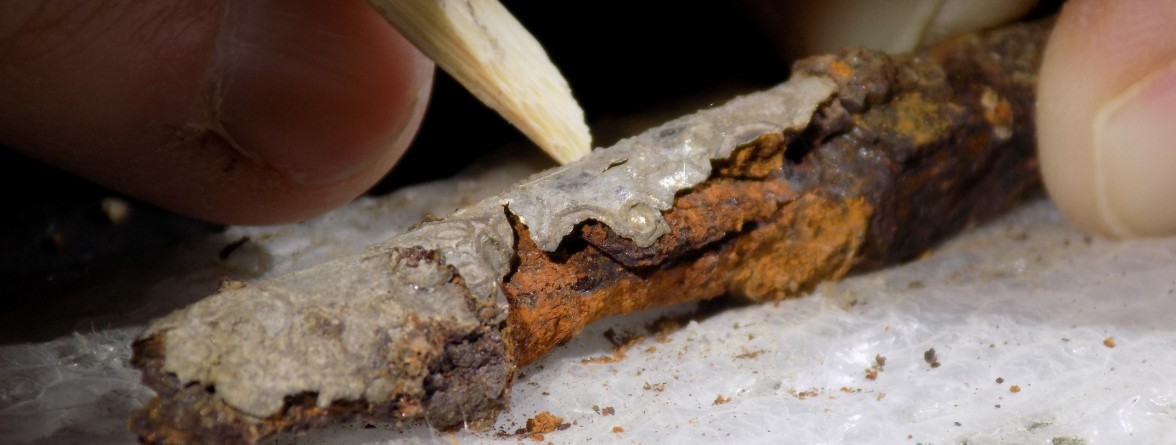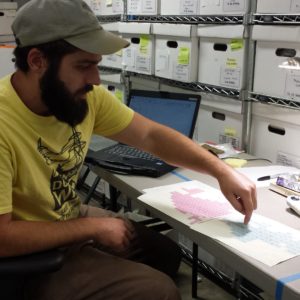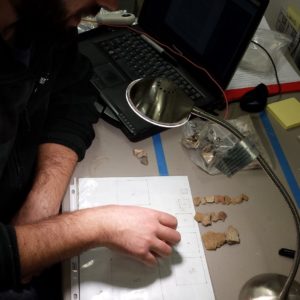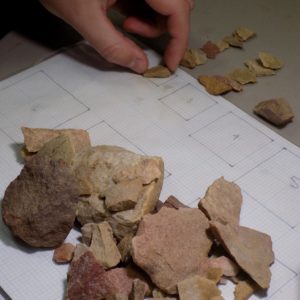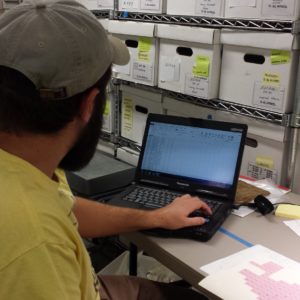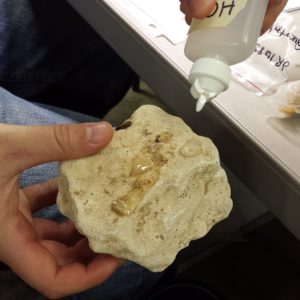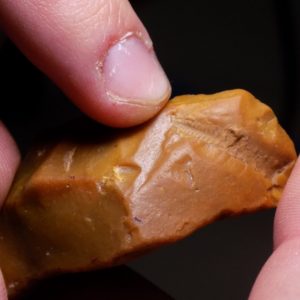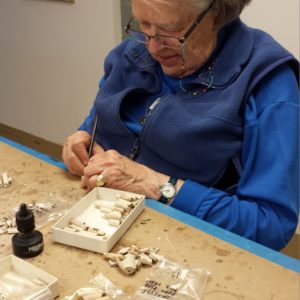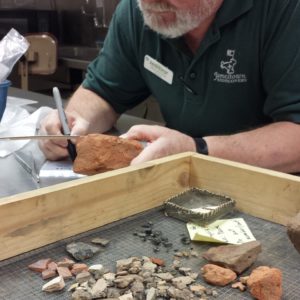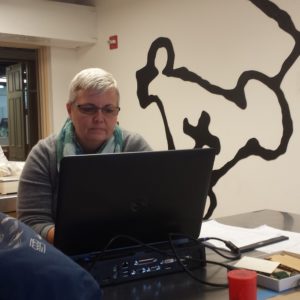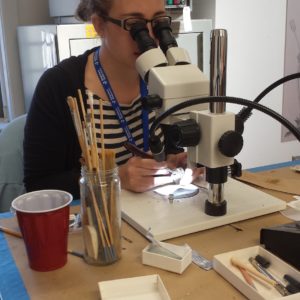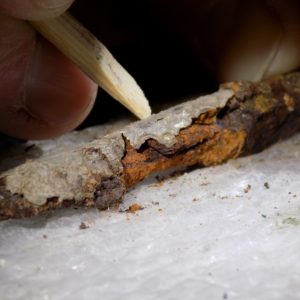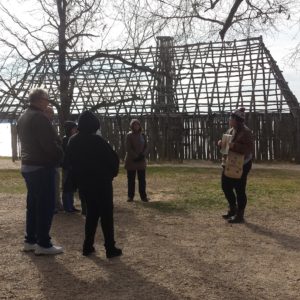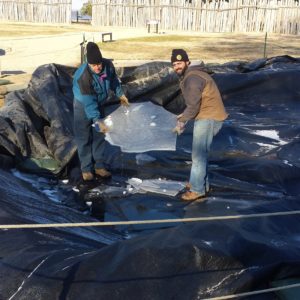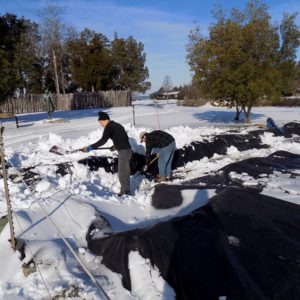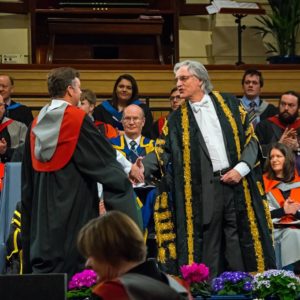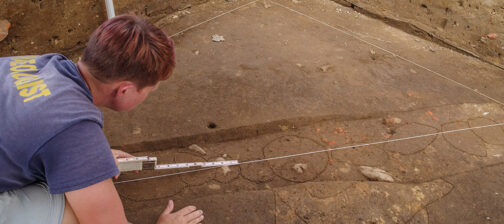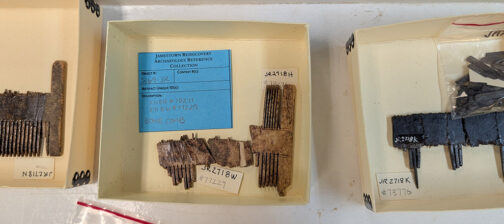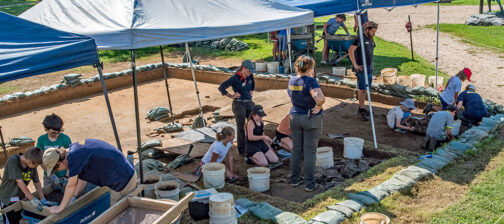Although James Fort is famous for being the location of the first permanent English settlement in the New World, archaeology has shown that it was familiar to Virginia Indians centuries before the colonists set foot on Jamestown Island. Every year the Jamestown Rediscovery archaeologists find hundreds, sometimes thousands, of prehistoric artifacts. This collection of artifacts, many of which may date to 8,000 years prior to the English settlement, suggests the high ground beneath the fort was a sought out by prehistoric peoples.
This winter, under the direction of Senior Staff Archaeologist Dave Givens, Bob Chartrand is analyzing local quartz and quartzite recovered from some of Jamestown’s plowed contexts. His focus is on stone tools and raw materials, and it involves recording metrics of material type, size, and how far the materials travelled before they were deposited at Jamestown.
“I’m simultaneously sorting and categorizing chert, flint, and other types of lithics in each archaeological unit, so the information is there for future study. However, the major focus of our study is on the quartz and quartzite,” said Chartrand. After he finishes gathering the data for the specified contexts, he and Givens will import the database into Arc GIS (Geographic Information Systems). Once the data is in the mapping system, they will use the data to create maps plotting density and distribution of quartz and quartzite on the site in an effort to find out where, when, and how prehistoric peoples populated the landscape.
In the lab, our diligent Jamestown Rediscovery volunteers have completed washing and sorting all the artifacts, and numbering all the pipe stems and ceramics from the features and units excavated during the 2015 dig season. This progress puts the team well ahead of schedule and has given volunteers to the opportunity to return to sorting and numbering artifacts from the 1861 Confederate Fort contexts. The inventory of the study collection in the Rediscovery vault also continues.
Conservator Katy Corneli has started assessing bone-handled knives in the collection that are awaiting conservation. Upon close inspection, Corneli noticed that the iron bolster of one 17th-century knife recovered from Confederate earthwork was wrapped in thin, decorative silver plating. The silver appears very low grade, with a high tin content. “The silver is so thin,” says Corneli, “that it’s likely that the silver was folded around a wooden handle.” Sometimes, the process of conserving an artifact leads to more exciting discoveries not immediately evident when excavated.
This month’s Dig Update video features Conservator Dan Gamble discussing the conservation of the “jack of plate” armor he recently completed.
Lastly, the Jamestown Rediscovery staff congratulates our colleague, Dave Givens, on the completion of his Master’s in Archaeology through the University of Leicester. Givens traveled to England the end of this month to receive his degree. He was accompanied by Rediscovery volunteer Chuck Durfor, who was on hand with his camera to document the occasion.
related images
- Archaeologist Bob Chartrand examining the map of archaeological units from which the lithics he is studying were found.
- Chartrand sizes some of the quartz and quartzite from one of the archaeological units
- The size chart on graph paper.
- Chartrand enters data into an Excel spread sheet.
- Using hydrochloric acid to test for calcium carbonate to identify limestone and chalk.
- Chartrand made the surprise discovery of a small fossil in one of the pieces of chert.
- JR volunteer Krista Mueller labeling some of the European pipe stems with the context number.
- JR volunteer Dick Mayton sorts some of the artifacts found this summer.
- JR volunteer Amy Baker enters data regarding inventorying the study collection.
- Conservator Katy Corneli starts works to remove corrosion on some of the small finds in the collection.
- A 17th-century knife blade with silver plating wrapped around the tang.
- Amber Phelps, of our JR Education department, gives a tour of the fort and describes the recent archaeological findings by Jamestown Rediscovery project.
- Archaeologists Don Warmke and Bob Chartrand remove ice from the cellar site.
- Warmke and Chartrand removing snow following the January snow storm.
- Senior Staff Archaeologist David Givens receiving his Masters of Archaeology from the University of Leicester. (Photo courtesy of Chuck Durfor)


